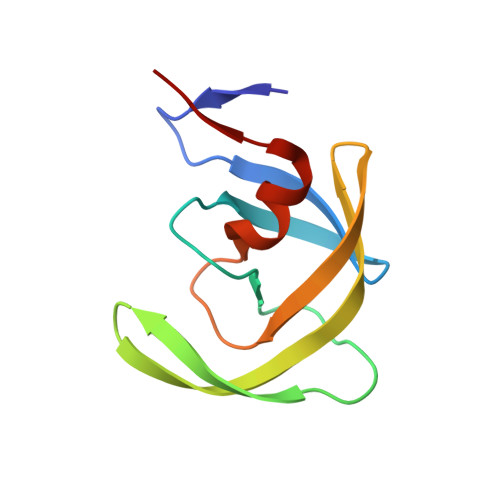HIV-1 protease with 10 lopinavir and darunavir resistance mutations exhibits altered inhibition, structural rearrangements and extreme dynamics.
Wong-Sam, A., Wang, Y.F., Kneller, D.W., Kovalevsky, A.Y., Ghosh, A.K., Harrison, R.W., Weber, I.T.(2022) J Mol Graph Model 117: 108315-108315
- PubMed: 36108568
- DOI: https://doi.org/10.1016/j.jmgm.2022.108315
- Primary Citation of Related Structures:
8DCH, 8DCI - PubMed Abstract:
Antiretroviral drug resistance is a therapeutic obstacle for people with HIV. HIV protease inhibitors darunavir and lopinavir are recommended for resistant infections. We characterized a protease mutant (PR10x) derived from a highly resistant clinical isolate including 10 mutations associated with resistance to lopinavir and darunavir. Compared to the wild-type protease, PR10x exhibits ∼3-fold decrease in catalytic efficiency and K i values of 2-3 orders of magnitude worse for darunavir, lopinavir, and potent investigational inhibitor GRL-519. Crystal structures of the mutant were solved in a ligand-free form and in complex with GRL-519. The structures show altered interactions in the active site, flap-core interface, hydrophobic core, hinge region, and 80s loop compared to the corresponding wild-type protease structures. The ligand-free crystal structure exhibits a highly curled flap conformation which may amplify drug resistance. Molecular dynamics simulations performed for 1 μs on ligand-free dimers showed extremely large fluctuations in the flaps for PR10x compared to equivalent simulations on PR with a single L76V mutation or wild-type protease. This analysis offers insight about the synergistic effects of mutations in highly resistant variants.
Organizational Affiliation:
Department of Biology, Georgia State University, Atlanta, GA, 30303, USA.

















